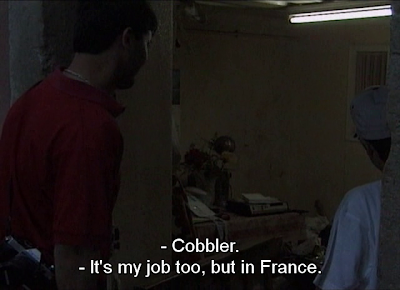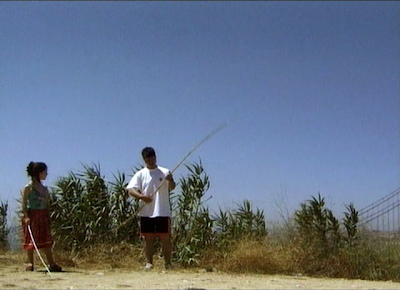Esta é a Minha Casa, a documentary following a family of Portuguese emigrants in France, as they travel back home to Trás-os-Montes, finds João Pedro Rodrigues with one foot back on Ethnographic Film territory — registering behaviours, rituals, customs (something not completely absent from his feature films) — although the director's primary interest is clearly in the film as Cinema, showing an obvious effort to always find interesting angles from which to shoot the action, and editing it in a somewhat abstract, fragmented way, which seems counter-productive to the purpose of Ethnography.
The film is marvelously complemented by the ethnographic essay it originated, Filomena's Silvano's
De Casa em Casa, which paints a more comprehensive picture of the human side of things, and gives context to the action in the film.
I found this footnote especially amusing:
Out of politeness, José never made any negative comments towards the films. He merely regretted the absence of some shots for which he had high expectations, (...) and asked for copies, if possible, of all the material we shot. He has, however, confided in his neighbor, a sociologist who put us in touch with him, expressing his perplexity at how the film was shot. The main issue was related to the fact that the classical cinematic representation focusing on the face, the part of the human body which in western culture is more directly associated with personal identity, was not the director's option of choice.







